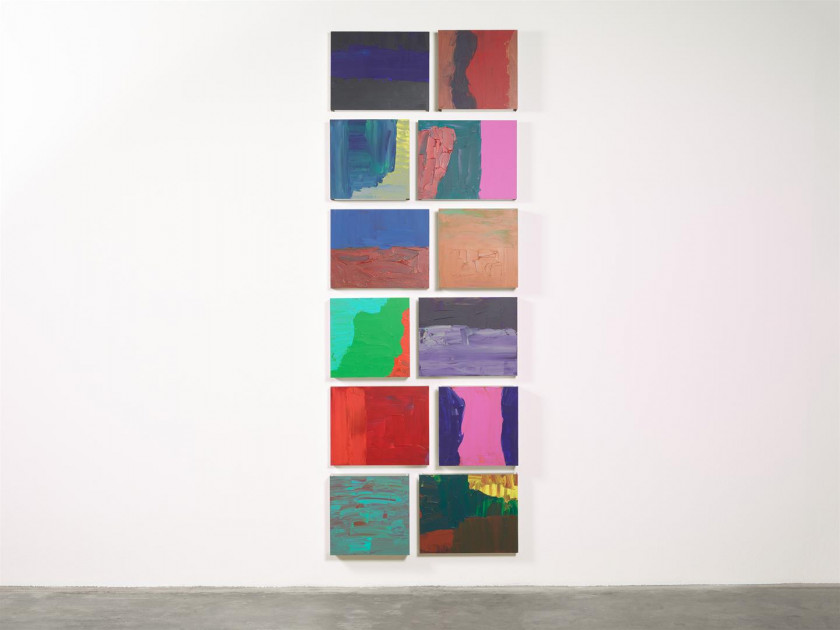RAM 12
painting


2001
Acrylic on aluminium
265 x 95 x 10/6 cm (40 x 40 x 10 cm (6x); 40 x 50 x 6 cm (6x))
Composed mostly of series, Pedro Calapez's work is characterised by the strong use of colour and has in the representation of space a transversal issue. Suggesting architectural references, but also landscaping, his works swing between the definition of the drawing and the imminent abstraction. In terms of process, the reference to the image bank that the artist has been collecting, where painters like Giotto, Fra Angelico, or even Piranesi prevail, is recurrent. In digital or material format, this research goes through isolating details and fragments that are the target of exploration and manipulation of the image by technological means, an important aspect that serves as a ballast to this painting.
RAM 12 is part of the works that the artist has been developing since the 1990s and which is expanding into 2000. Presented in an irregular grid, but obeying the logic of the square, as the name indicates, RAM 12 is a composite work, constructed of twelve elements, subdivided into two formats, six squares and six rectangles, in which the small paintings are juxtaposed with a regular distance, forming a unique piece. Creating a distance between the pictorial surface and the wall, the use of aluminium as a support, a light and stable material, brings an industrial dimension to the exhibition space, which contrasts with the prominently manual and gestural practice of Calapez's painting.
Strongly pasted, these paintings exhibit several layers where the dragging of the paint is intelligible. In these apparently blurred details, located at the threshold of abstraction, horizon lines, paths, scales and depths are implied. The reading of this work requires a work of contemplation in two stages: the individual elements and the whole. In this exercise of gestalt, our gaze leaps from detail to detail, and the body is forced to step back in the space until the vision grasps the whole work.
Rita Salgueiro